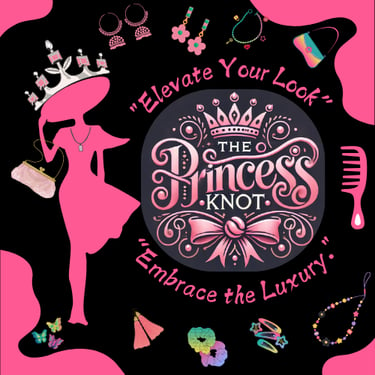"From Function to Fashion: The Evolution of Hair Bands Through History"
Team - The Princess Knot
11/20/20242 min read


Hair bands, commonly known today as headbands, have a rich and varied history that spans cultures and centuries. Initially serving practical purposes, they evolved into significant fashion statements, reflecting societal values and technological advancements.
Ancient Beginnings: Greece and Rome
The earliest recorded use of headbands dates back to ancient Greece, around 475 BC. Both Greek and Roman societies adorned themselves with hair wreaths during special occasions and significant events. These wreaths, often crafted from plants, symbolized status and celebration. Over time, cultures like the Etruscans and Romans began enhancing these wreaths with gold, silver, and precious jewels, indicating wealth and prestige.
The Middle Ages to the Renaissance
Throughout the Middle Ages, headbands continued to play a role in fashion. Women of affluence used bands made of luxurious materials such as silk and velvet to adorn their hairstyles. These accessories not only served decorative purposes but also held veils in place, aligning with the modesty standards of the time. As fashion evolved during the Renaissance, headbands became more elaborate, reflecting the period's emphasis on opulence and artistry.
The 20th Century: From Function to Fashion
In the early 20th century, headbands experienced a resurgence in popularity. Wide bands, known as "headache bands," became fashionable among women. It was believed that the tight pressure they provided around the forehead could alleviate or prevent headaches. These bands were often lacy in design, adorned with ribbons and rosettes, and became a staple in women's fashion.
The 1920s saw headbands, referred to as bandeaus, become even more extravagant. They were crafted from exotic fabrics and decorated with feathers and jewels, becoming synonymous with the flapper movement. This era's headbands symbolized a break from tradition and an embrace of modernity and freedom.
Mid-20th Century: Practicality and Pop Culture
By the 1950s and 1960s, headbands had found a place in both practical use and pop culture. Athletes began wearing them to manage sweat during physical activities, with French tennis player Suzanne Lenglen popularizing their use on the court in the 1910s. Simultaneously, headbands became associated with various subcultures, including the hippie movement of the 1960s, where they were used as symbols of counterculture and rebellion.
Modern Day: A Versatile Accessory
Today, headbands are a versatile accessory, available in countless styles, materials, and designs. They serve both functional purposes, such as keeping hair away during sports or skincare routines, and as fashion statements, adding flair to outfits. From simple elastic bands to ornate, jeweled pieces, headbands continue to be a testament to human creativity and the ever-evolving nature of fashion.
In conclusion, the journey of the hair band from ancient ceremonial wreaths to modern fashion staples reflects broader cultural shifts and technological advancements. As both a practical tool and a symbol of style, the headband remains an enduring accessory in human history.
The Princess Knot
A Unit of NEHA TRADERS
Stylish accessories for every woman's wardrobe.
Quick Links
contact@theprincessknot.in
+91 83001 51443
Copyright © 2025 The Princess Knot | All rights reserved.


